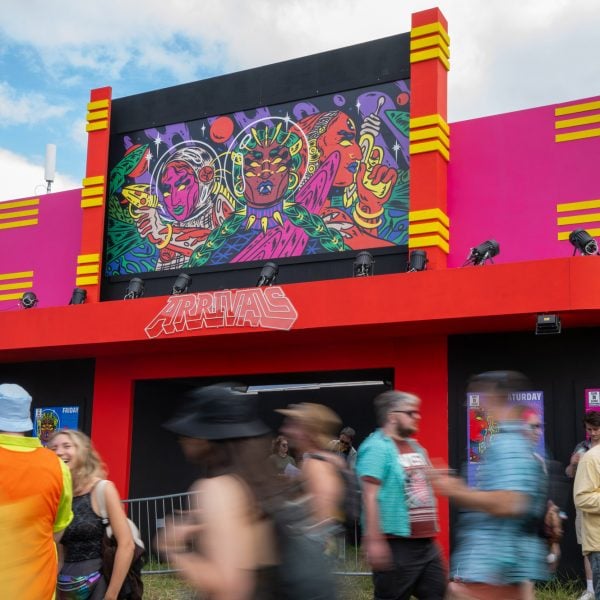Set designers Shirin Naveed, Shankho Chaudhuri and Esha Sikander created a mini-nightclub for this year’s Glastonbury festival that only played music from South Asian artists.
Arrivals is Glastonbury’s first dedicated South Asian stage, envisioned by cultural collectives Dialled In, Daytimers and Going South to provide emerging musicians from across the diaspora with a gateway into the music industry and mainstream festivals.
Conceptualised as a cinematic journey to an alien jungle planet, the stage design combines iconography borrowed from pulp classic sci-fi films and comic books within a newly redefined South Asian aesthetic rooted in politics.
“Orientalism is bedded into sci-fi,” Chaudhuri told Dezeen. “What if there existed a canon of sci-fi that centred the South Asian experience? This was a way to reclaim and recontextualise a lot of those references through our own community.”
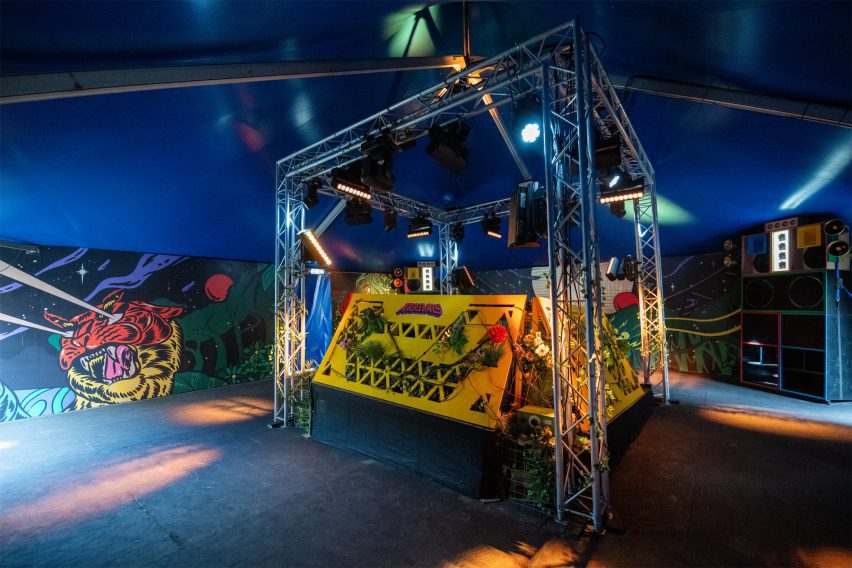
The stage, set in Glastonbury’s Shangri-La area, consists of an indoor dancefloor and a garden space, fronted by a dramatic facade designed to recall vintage cinema halls found across Britain and America.
A large-scale billboard was created for the entrance facade, paying homage to the styling of Indian cinemas with their neon signs and classic Bollywood posters.
“We opted for an art deco facade directly referencing the Dominion Cinema in Southall, which [Sikh student] Gurdip Singh Chaggar was murdered outside of in the late 70s, starting a whole movement of South Asian resistance that’s still alive today,” Naveed said.
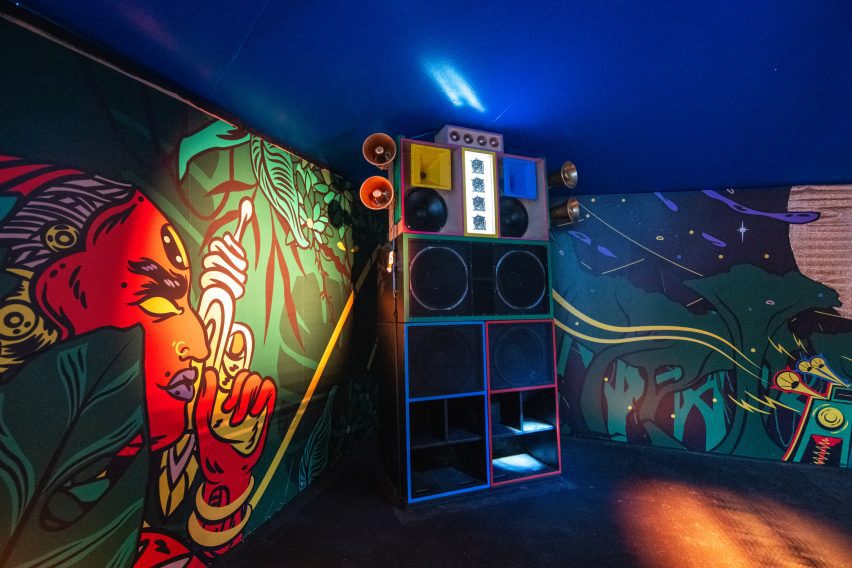
The painted facade features the vibrant work of illustrator Osheen Siva, currently based in Goa, who imagines surreal, speculative depictions of queer feminine power in decolonised dreamscapes.
“I wanted to create three main retro-futuristic characters amplifying strength and culture,” said Siva.
Other references found in her illustrations, which feature across the interior, include body armour modelled on saris, cyborg masks and space guns informed by Mughal architecture and garments with the distinctive patterns created by ikat dyeing.
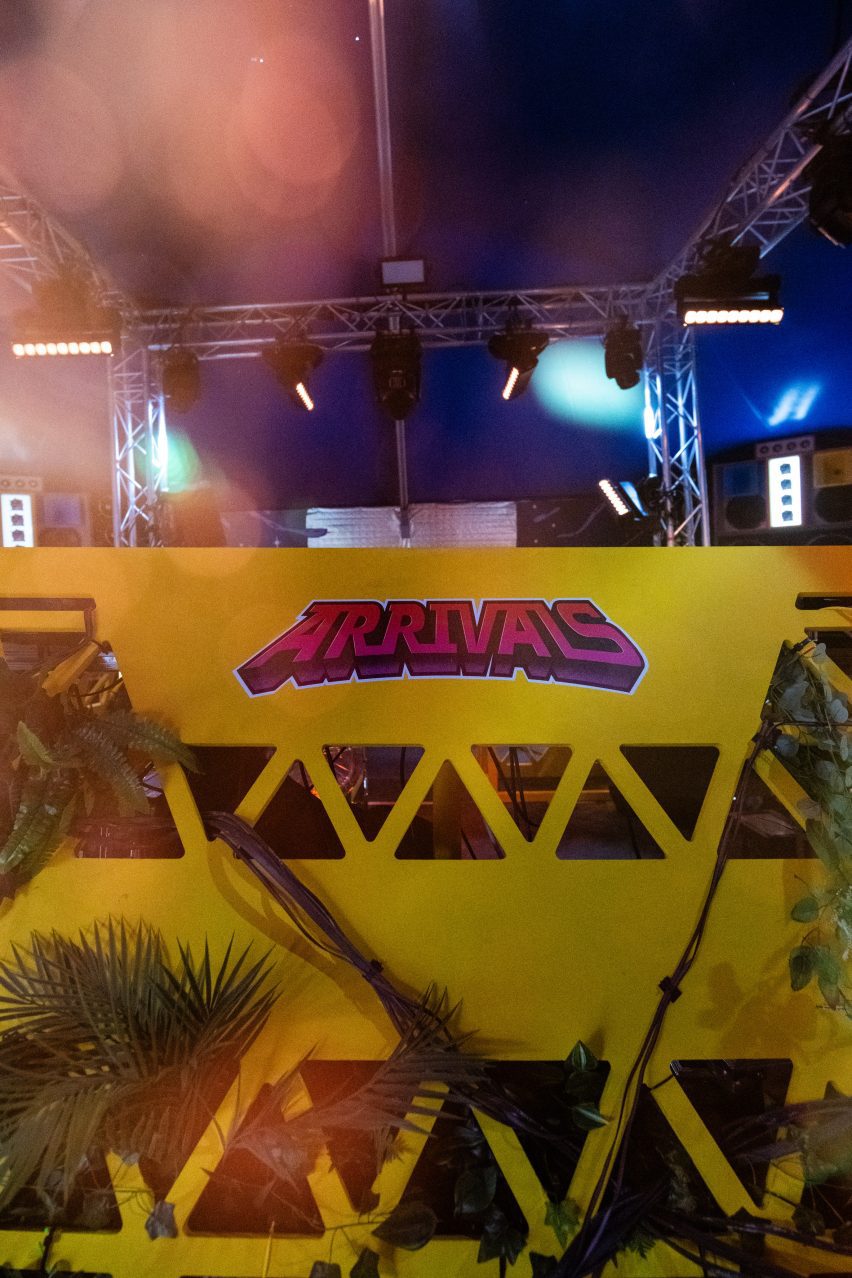
The physical Arrivals building was constructed from sheet wood with the idea that, should the installation be resurrected in future, the materials can be easily reused and reassembled.
The dancefloor itself is centred on a bright yellow DJ “island” enclosed in a metal lighting rig and surrounded by a 360-degree panoramic mural illustrated by Siva.
A nod to Glastonbury’s iconic Pyramid main stage, the geometric DJ booth is decorated with fake plants and wires – a mix of technology and plant life.
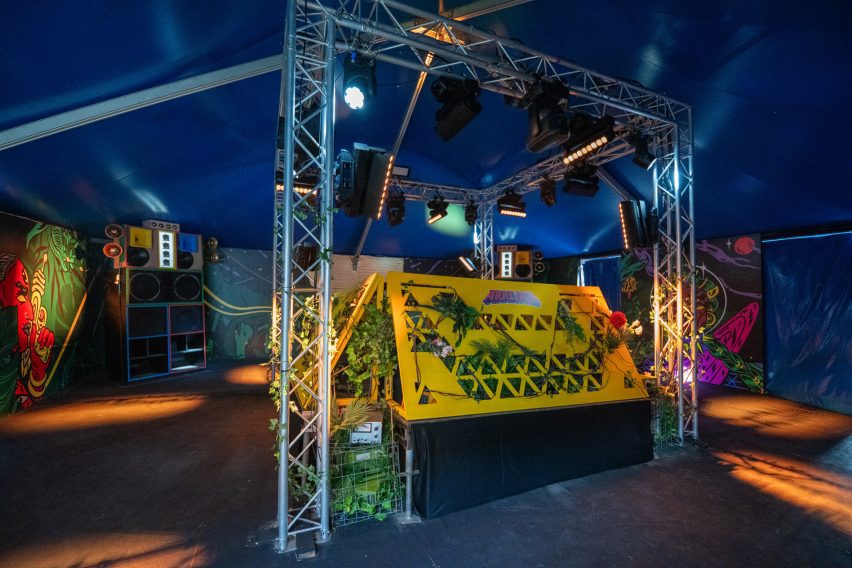
“I went to go see the V&A’s Tropical Modernism exhibition and it clicked,” Chaudhuri said. “Placing tropical modernist design in the centre of our island stage and the architecture of that space felt like the stars had aligned.”
“We found a language, something that felt futuristic but also had a lineage with something that was inherently South Asian in its origin.”
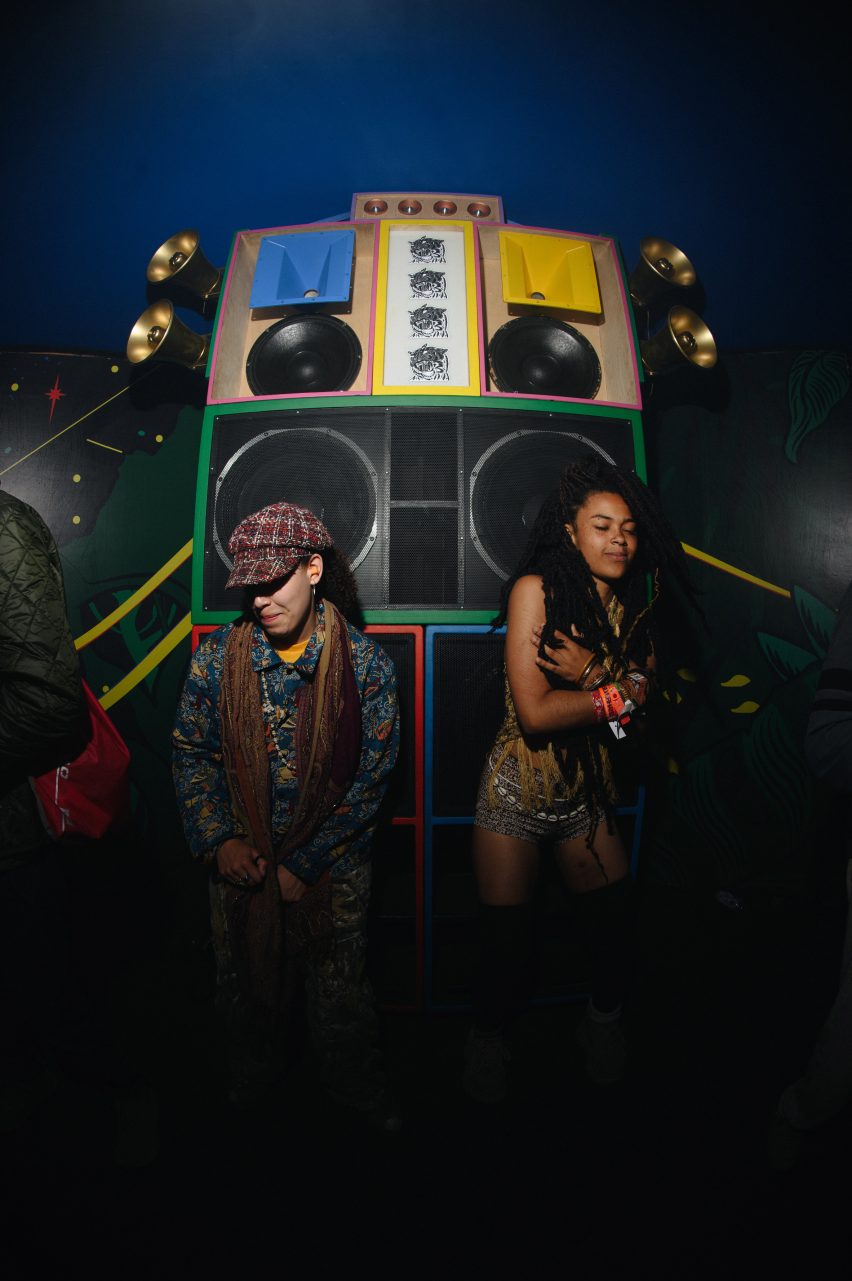
East London manufacturing company CNC Projects created the side panelling for the booth, decorated with rows of triangular cut-outs.
“That tessellated, triangular geodesic language is a trope of sci-fi,” Chaudhuri said. “There’s definitely a bit of Raj Rehwal’s Hall of Nations and the Daft Punk Alive 2007 tour in there as well, the fusion and remixing of different disparate elements coming together.”
The island stage was placed in the middle of the tent to evoke the effect of a crash-landed spaceship on an alien planet.
“That central configuration broke the barrier between having one viewpoint towards the artist or DJ who’s on stage, to feel as though you are part of the space within the film,” Sikander said.
“There is anti-colonial rhetoric that threads through what it is that we’re trying to do whereby all of South Asia, mainly the Indian subcontinent, is without its borders. We create a context for all of us to feel as though we’re part of that inclusive space.”
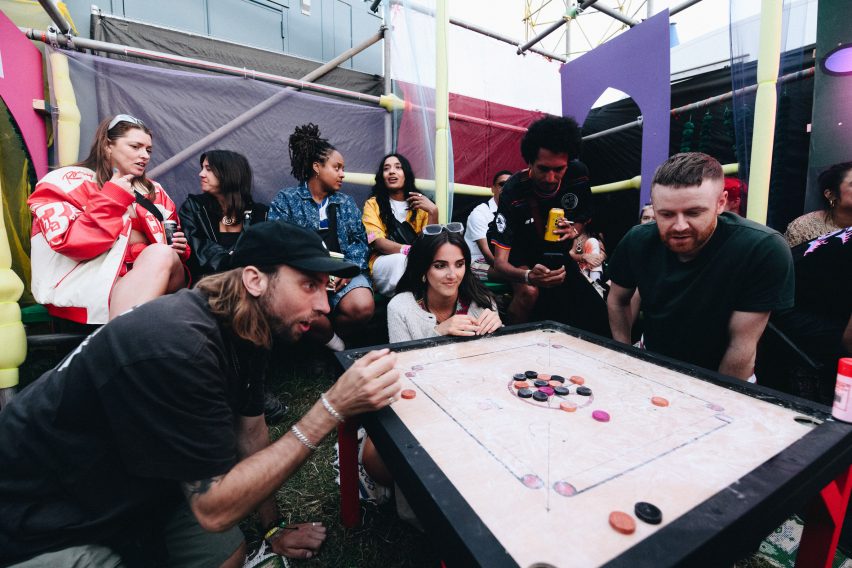
Arrivals’ fortress-like outdoor garden space was informed by Islamic architecture and South Asia’s cultural link to textiles.
“We looked at different weaving techniques inspired by the Punjabi region, but also daybeds across South Asia,” said Naveed. “We opted for flat webbing and geodesic domes for the structure, spray painted and constructed from scrap materials.”
There’s even a table for playing the Indian board game Carrom.
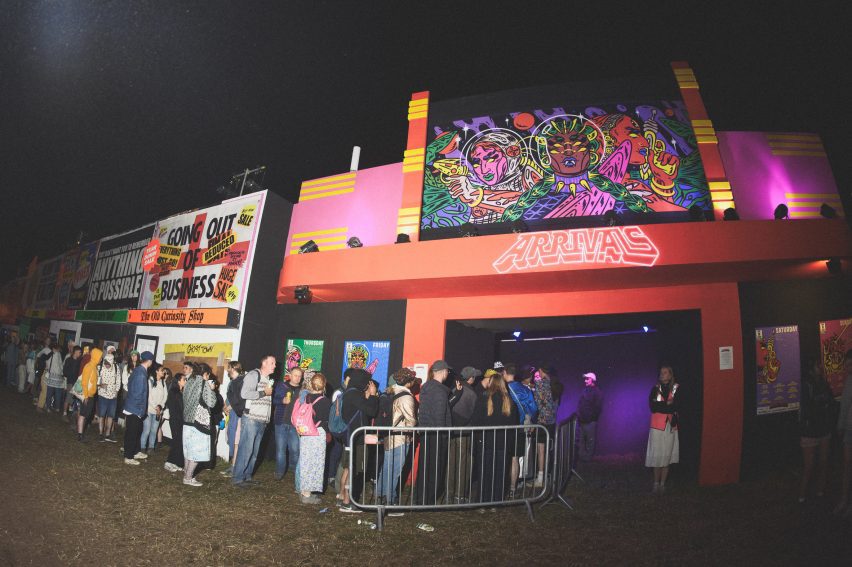
Artists that played Arrivals included DJ Ritu of the 90s Asian underground scene, emerging artists Anish Kumar and Gracie T, and popular DJs Manara and Nabihah Iqbal.
Other new stages debuted at this year’s Glastonbury include The Dragonfly, made from a decommissioned military helicopter, and the Tree Stage centred on a storm-felled 300-year-old oak tree.
The photography is by Yushy.

